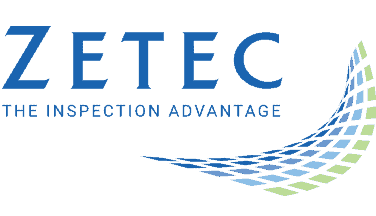Steam Turbine NDT Inspection Best Practices

Steam turbines are elegant in their simplicity. Water turns to steam; steam rotates the turbines; energy is transformed into electricity. But this simplicity belies incredible complexities in their operations and tiny intricacies in their build. These intricacies demand a rigorous testing practice to make sure that the turbines work safely.
Increasingly, these turbines are tested using Phased Array Ultrasonic Testing (PAUT). This branch of non-destructive testing (NDT) has been shown to be ideal for the geometric and physical complexities of steam turbines.
Steam turbines go through a lot. Testing is needed to assure consistency and safe usage. When it comes to making a decision for efficient, cost-effective steam turbine NDT inspection, PAUT is the simple answer.
The Challenges Steam Turbines Present Technicians
To say that steam turbines endure a lot is an understatement. Steam turbines can move anywhere from 3000-3600 rpm, generating incredible amounts of energy. They are tasked with producing, at the upper end, hundreds of megawatts of electricity (250 mw is not considered a heavy load). They do this hour after hour, day after day.
This would be a lot of pressure if the turbine was one solid part. But of course, it is not. It is made of many different components. Where the blade is attached to the body (the serration) is subject to intense pressures. Any cracks that develop can turn into major problems due to sheer force.
This calls for rigorous testing. But that isn’t always easy. There are a few reasons why testing steam turbines can be a challenge.
Steam Turbines Have Complicated Geometries
Testing is never cut-and-dried, of course, but it is easier on surfaces that are entirely flat. For obvious reasons, a smooth unbroken plane wouldn’t work for turbines. In particular, the blade attachment serrations are extremely complex and intricate, and standard NDT testing wouldn’t be able to handle every turn, nook, and attachment on the surface, to say nothing of detecting subsurface cracks.
Blades Have to be Checked In-Situ
Removing a blade to test it isn’t ideal. The testing has to take into account how the blade fits into the rest of the turbine. That means shutting down the machine.
Any Downtime Is Lost Revenue
Downtime for a generator means less power, which could lead to dissatisfied customers and other issues. Downtime needs to be avoided as much as possible. Yet, that is the dilemma as inspections are needed, which can be complicated. Complications increase downtime. So how should that be avoided? One way is to employ PAUT: a method that can quickly and efficiently handle the complexities.
The Benefits of PAUT For Steam Turbine NDT Inspection
Ultrasonic testing (UT) uses high-frequency soundwaves to test for echoes caused by minute inconsistencies and anomalies. These can be induced with different kinds of probes. Phased array instruments, probes and wedges allow the user to individually pulse multiple small elements into the surface.
This makes a difference because the technician controls the sweep and the focus of the beam. By being able to manipulate the beam, the user can probe curved surfaces, attachments, and ridges.
In some examples, legacy testing approaches provided testing coverage for exterior hooks of around 60%, with some interior hooks as low 40%. This is an enormous missed opportunity. Applying encoded PAUT with a high performance instrument and a customized scanner could significantly improve the coverage for both exterior and interior hooks, all without blade removal.
Ease of Use With Encoded PAUT
Excellent coverage is the primary reason why encoded PAUT is an optimal choice for steam turbine blade NDT inspection, but that’s not the only reason. The probes and scanner not only capture complexities, but they are also easy to use with training. Using PAUT software that features a 3D work environment is intuitive and provides fast images that are easy to understand.
The biggest benefit is the portable instrumentation for PAUT. Technicians have to be able to maneuver and carry instrumentation in tight quarters. Testing equipment that is portable, fully integrated with capable software, and has 2D matrix array capabilities reduces the equipment needed and can increase speed.
That’s why PAUT is favored as an NDT solution for the power industry. It is easy to use, and effective. It captures a complete picture without requiring much downtime, prevents disasters, and increases the ability to generate power.
Finding the right testing solution that keeps you up and running doesn’t have to be complex. Comprehensive PAUT solutions for steam turbines gives you the power to protect your investments and keep the lights on.
Zetec is the leading supplier of Phased Array Ultrasonic testing solutions for manufacturers of steam turbines. Contact us today to discuss the best steam turbine NDT solutions for your needs.
